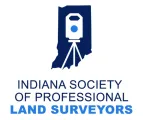The word, itself, is fairly self-explanatory. These are subsurface utilities and/or structures that either are not known to exist or cannot be located by traditional Electromagnetic (EM) methods. Deeper exploration of the subject unearths a lot more questions surrounding unlocatables: how they occur - and how frequently, the risk they pose, and how to mitigate risks.
How Unlocatables Occur
It's a whole lot easier to understand how unlocatables occur, if you understand the limitations of EM locating. EM is the most common tool for locating utilities. A transponder transmits a low-voltage AC current onto a conducive subsurface material, creating an electromagnetic field that locators detect with a wand-like receiver. Locators use the readings on the receiver to determine and mark the locations of known utilities.
Known Utilities
While EM locating is efficient in many cases, the key word (and limiting factor) in that explanation is "conducive." Known utilities must either be a conducive material or have a reliable tracer wire to effectively use EM locating. Increased use of non-conducive materials, such as high-density polyethylene (HDPE), and environmental inhibitors (that compromise the integrity of tracer wires) hinder locators from safely and accurately locating and marking known utilities.
Unknown Utilities
Notice that that statement only references "known utilities." Locators must be aware of the utility and able to successfully connect the transponder for EM to be effective. Incomplete and/or inaccurate records complicate the locating process exponentially. If locators don't know that a subsurface utility or structure exists, or if it's not where records show it should be - it can go altogether undetected and unmarked.
How Common are Unlocatables?
The more our infrastructure evolves, the greater the likelihood of unlocatables on excavation sites. Aging infrastructure, abandoned utilities, crowded utilities, the vast expansion of private utility infrastructure and poor record management over the past 20 years have exponentially increased the potential for unlocatables on-site.
Associated Risks
Anytime excavation is performed in an area where unmarked underground utilities or structures are present, all project stakeholders are at risk:
- Crews on-site face unknown potential safety hazards.
- The community is at risk of danger or temporary loss of utility services.
- Project profitability is jeopardized due to costly delays and/or damages.
Risk Mitigation
Mason Private Locating specializes in mitigating the risks associated with unlocatables. Our experienced team is equipped and trained to use advanced technologies to safely detect, mark, map and even excavate vulnerable infrastructure.
- We employ the use of both EM and Ground Penetrating Radar (GPR) technologies to locate known AND unknown utilities and structures on all locating projects.
- MPL technicians complete scans in real-time to produce instant results for our clients.
- GPS-accurate equipment allows us to produce precise maps of your underground infrastructure.
- Vacuum excavation compliments our suite of damage prevention services by offering our clients optimal efficiency on their projects.
For more information about unlocatables and risk mitigation, give us a call. Our knowledgeable call center representatives are happy to answer your questions, start the proposal process or schedule services for your upcoming project.













